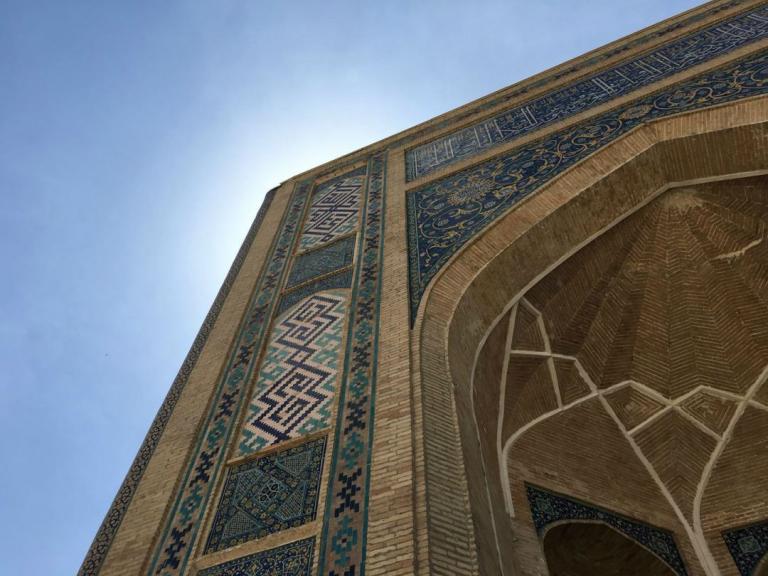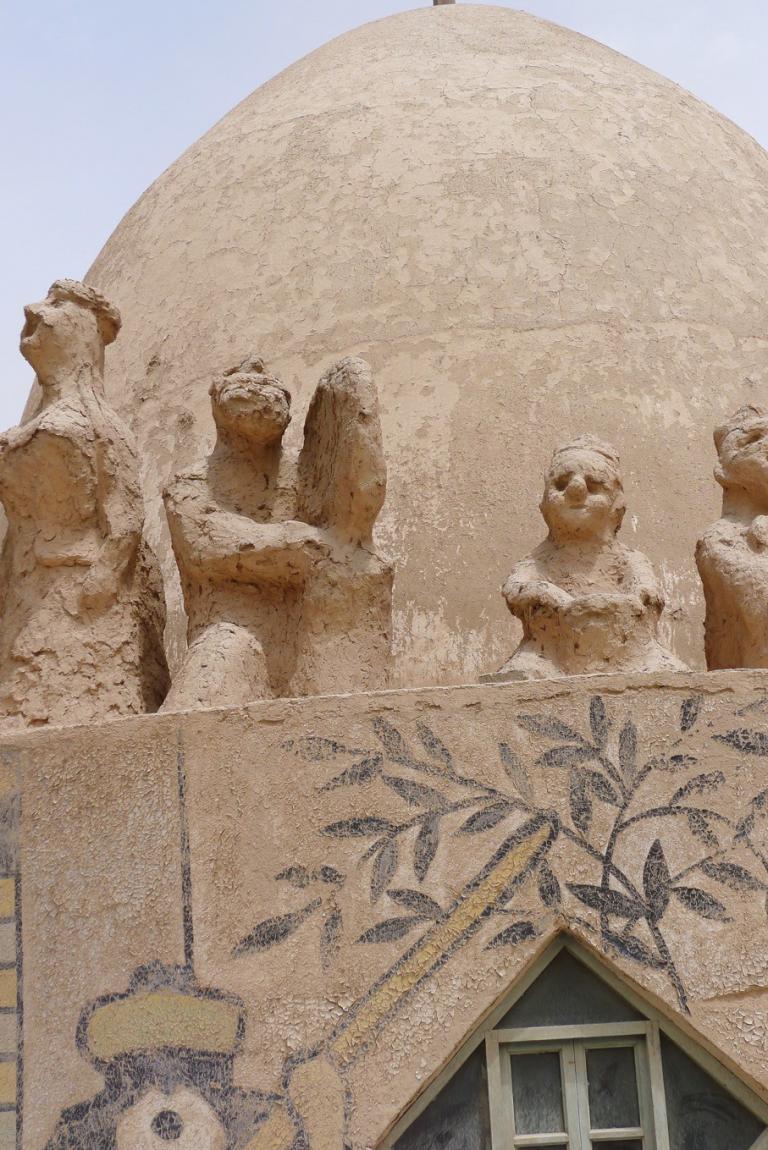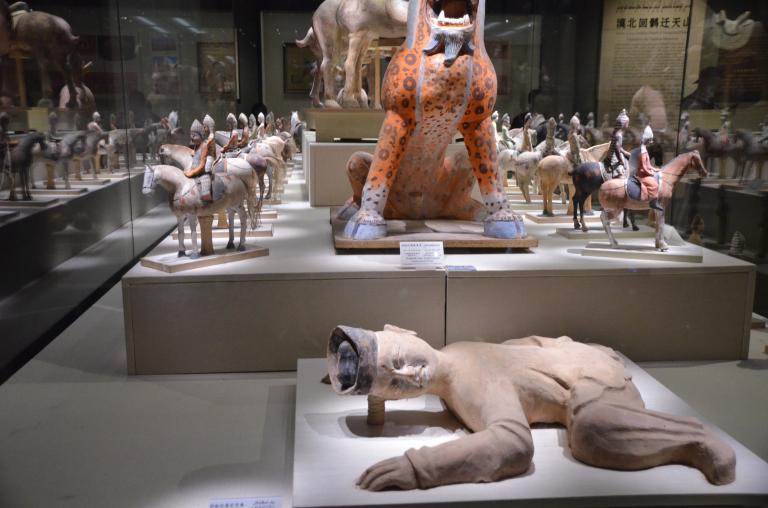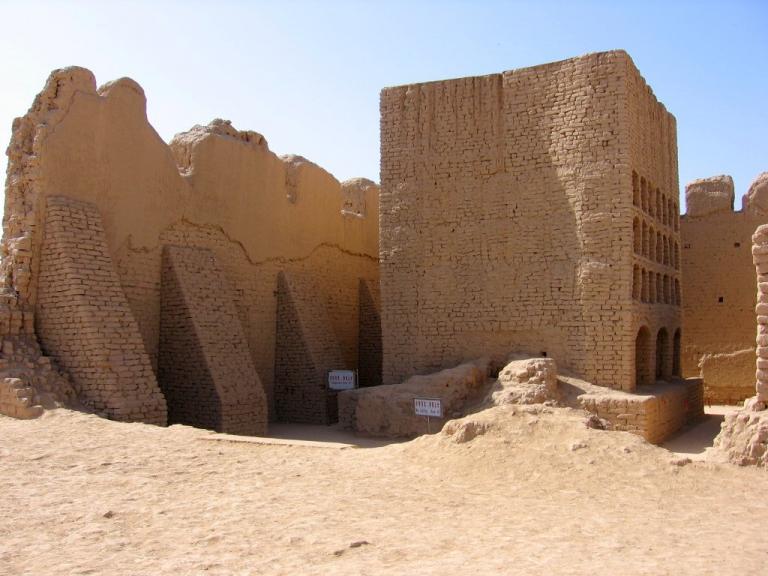Astana Tombs
8 min readOutdoor scene of Astana in xinjiang

The Astana tombs,located about 40km away from the southeast of today’s Turpan city and 6km away from the ancient ruins of Gaochang, were public cemeteries of urban and rural officials and civilians in the ancient Gaochang kingdom, which was built in the 3d century to the 8th century approximately, with a history of over 1,700 years. Extending from the northeast of the ancient city to the northwest thereof, the whole tombs are 5km long from east to west and 2km wide from south to north. Among the dense ancient tombs accumulated in Gobi dunes within a radius of over 10km, there are tombs of rich nobles and mighty generals as well as tombs of civilians and soldiers of a lower social grade. The Astana tombs are arrayed normally in sequence according to the seniority of grandparents, parents, children and grandchildren based on the family. All the tombs are soil cave tombs, in which most of the people are local Han people, meanwhile, there are minority residents such as Cheshi, Turks, Huns, Gaoche people and Sogdians buried there as well, indicating that the Han nationality was the major nationality in the Gaochang kingdom at that time and the nationalities were equal to eachother. The tomb structure here regarding the surname as the family has many similarities to the tombs in the Hexi Corridor and the Central Plain, thus the Astana tombs are also called “a living history record of Gaochang and an underground museum in Turpan area”by today’s scholars. Since the 1950s, people have carried out fourteen archaeological excavations here and cleaned up 456 tombs in total with unearthing thousands of various precious relics.
In 1988, the state Council ranked the Astana tombs as one of the Chinese National Key Cultural Relics Protection sites.

Beside the Astana tombs, there located Khara-khoja tombs, which are collectively known as “Astana-Khara-khoja tombs”. Astana means “capital”inUyghur, and Khara-khoja is the name of a warrior beheading a dragon to get rid of the evil for the people in the ancient kingdom. Astana and Khara-khoja now respectively are the names of two adjacent villages.
Extensively appreciated by Chinese and foreign archaeologists and historians, the Astana tombs are known as “the underground museum”. The nobles, officials and civilians from the early Western Jin Dynasty to the Mid-Tang Dynasty were buried in the Astana tombs consisting of more than five hundred tombs in total, but the tomb of the Gaochang king has not been discovered yet. The famous general Zhangxiong of the Yeast’s Gaochang kingdom, together with his wife and his son Zhang Huaiji, was buried here.Most graves of the Astana tombs were excavated in loess layers containingGobi stones. Because of high and spacious topography as well as hot and dr climate here,a natural bacteria-free environment has been formed in the graves, the ancient corpses and funerary objects in the graves have not been decayed in spite of thousands of years, and a great number of relics have beenpreserved perfectly. Many paintings, clay figurines and other tens of thousands of unearthed relics are brightly new in color and preserved very well. The shape of the unearthed Tang dumplings is almost same as that of today’s dumplings and containing stuffing inside are also as good as new.
The Astana tombs are cave tombs with slope paths.A plane of the ancient tomb is cross-shaped.A long slope tomb path as long as over 10m is in front of the grave, connecting with each other, which is a resting place for the dead.The grave usually higher than 2m and 4m2 in size has a flat top or an archivolt top. The dead was usually placed on an adobe sleeping platform or a simple wooden bed at the back of the grave, resting his head on a cock-shaped pillow, covering a piece of facecloth on his face, closing his eyes in peace, holding wood in both hands and being dressed in clothes made of cotton jute or brocade silk. Around the dead, there were simulative pavilions, terraces and open halls, carriage and horse honor guards, musical instruments, chess, Chinese brushes and ink, or food such as grapes, melons, fruits, dumplings and breads for the dead to use or enjoy in the nether world. Some graves were painted with vivid figures, birds, flowers and landscapes with smooth lines onback walls. Tens of thousands of precious relics such as documents, epigraphs, paintings, clay figurines, pottery implements, wooden implements, metal implements, stone implements, ancient coils, silk and cotton and wool textiles have been unearthed from the ancient tombs. Mummies(namely dry corpses)unearthed here are comparable with Egyptian mummies.
Before the late Qing Dynasty, robbers usually trampled here because there were a large number of the ancient tombs, but the scale was a bit small. Since the 18th century, European scholars have discovered that they are from Asia by researches on historical comparative linguistics, which is one motivation of the European “explorers”for stealing the Chinese relics. The Astana tombs were robbed by English Stein, Russian Kozlov, German Le Coq, and Japanese Tachibana Zuicho and so on in the early 2oth century. The Astana tombs suffered about 80 years of excavation, and the excavation during 1900-1930 was the craziest. The relics left at present were thrown away by the European explorers basically because of little value, and the most valuable and precious relics have already been stolen by the explorers.
Stein carried out the exploration in Central Asia in four periods of 1900 to 1901,1906 to 1908,1913 to 1916 and 1930 to 1931 respectively. He focused on Xinjiang and Gansu in China, stealing numerous relics and books. He stole 323 boxes of relics from the Astana-Khara-khoja tombs near the Gaochang site just within September and October of 1915. On the way back to England, even tall and strong camels died of heavy relics. It is said that the camels died of fatigue within the territory of China and Central Asia for the theft were up to more than 300. To avoid the regulatory supervision of the Chinese government, Stein once stored these relics in the British consulate in Xinjian and avoided the regulatory inspection of the Chinese government in the name of consulate supplies.
In and after 1905, the German Le Coq conducted three destructive excavations on large scale in Khara-khoja and stole a great number of relics.
In March of 1912, Tesshin Watanabe and Yoshikawa Koichiro of the Japanese Otani expedition excavated in the Astana tombs, and the foreign explorers firstly discovered the mummies here. In the second half year of 1912, Koichiro Yoshikawa excavated the tombs twice alone, obtaining a lot of mummies. They enchased the mummies and transported to Japan in 1914.Together with numerous other cultural relics, the items transported to Japan this time contain ten Astana mummies in total, including five male mummies, four female mummies and one kid mummy.

Since the foundation of the People’s Republic of China in 1949, the archaeologists have conducted fourteen excavations here and unearthed tens of thousands of cultural relics including the silk textiles, the murals, the pottery implements, the wooden implements, the coins, various tomb figurines, tombstones, the epigraphs and so on, among which the most precious was more than 2,700 ancient documents unearthed here. According to the Chronological records in the documents, the 9th Taishi year of the Western Jin Dynasty (273 AD) was the earliest and the 13th pali year of the Tang Dynasty(778AD) the latest, lasting for 505 years. There were more than 100 documents of the Gaochan Prefecture during the Sixteen States Period, accounting for about 5% of the whole documents, and more than 700 documents of the separated Gaochang kingdom, accounting for about 30% of the whole documents; and the rest were the documents of the Tang Dynasty, which were about more than 1,700. According to the form, the documents were divided into contracts(including tenancy, transaction, employment, debit and creditand so on), membership accounts(hand real, accounts, census registers, field distribution accounts, field owing accounts, field return accounts, corvee and tax books, household assessment accounts and so on), official documents(including arguments and records of cases heard, certificates granting a job or honor, traffic certificates and credentials issued by the government, received and issued documents, accounts of receipts and payments and so on), private letters, manuscripts of Confucian classics and funerary clothes and so on, with the content of the documents being related to politics, economy, military, ideology, culture and other aspects, ranging in from ancient laws and regulations, historical events and activities of historical figures to purely private life trivia which provide materials at first hand for researching this part of the history, especially the documents of the Gaochang Prefecture and the Yeast’s Gaochang kingdom fill in gaps of the local historical records. These documents now have been compiled as Unearthed Documents of Turpan composed of ten volumes in total and published by the Cultural Relics Publishing House.
The corpses in the tombs have been preserved perfectly under local dry conditions.80% corpses in more than 500 tombs have become dry corpses-mummies, most of which are in good shape. Even eyelashes and black and white eyeballs exposed in palpebral fissures of some mummies can be seen distinctly. Among these mummies, the mummy of the famous general Zhang Xiong of the Gaochang kingdom is about 1.9m tall and preserved well, still presenting the manner of the great generals. From intuitive point of view, their racial problem arouses great interest of anthropologists and archaeologists.Studying and analyzing their hair can help to understand the environment, diet and health condition of people at that time.
The murals in the Astana tombs reflected the social life from many aspects.For instance, the mural in the 98th khara-khoja tomb of the Gaochang Prefecture divided into five groups and nine square lattices was a portrayal of the landlord manor life, presenting a couple of male and female tomb occupants sitting on heels at the center with respectively making an obeisance by cupping one hand in the other before the chest, two maidservants standing behind,a lot of working people with some holding a basin, some pushing a millstone and some leading an ox and holding a whip, high-wheel ox carts, pommelled horses, fields and grape gardens, In some tombs of the Gaochangkingdom, there were classical Chinese silk paintings about Fuxi and Nvwa having human’s head with snake’s body, Fuxi holding an ink fountain which had not been seen elsewhere. The silk paintings also focused on the maidservants, painting their cheese and play. One silk painting only remaining the head, chest and hands indicated that wearing the “Western-style clothes”with small sleeves and a turndown collar was a unique image of women in ancient paintings.
Most funerary daily articles were the ceramic and wooden implements, and some were burial objects only preserving the form. Persian silver coins and a little amount of Eastern Roman gold coins and imitations were contained in the dead. Among them, People are most interested in tomb guard beasts and colorful wooden figurines. And the tombstones, epigraphs as well as tomb bricks unearthed from the tombs own very important value in the archaeological research.
Ground objects such as stone inscription, ancestral halls and trees invisible in area of the Astana tombs, even grave mounds are invisible here. And the royal tomb of the Gaochang kingdom has not been discovered so far.









